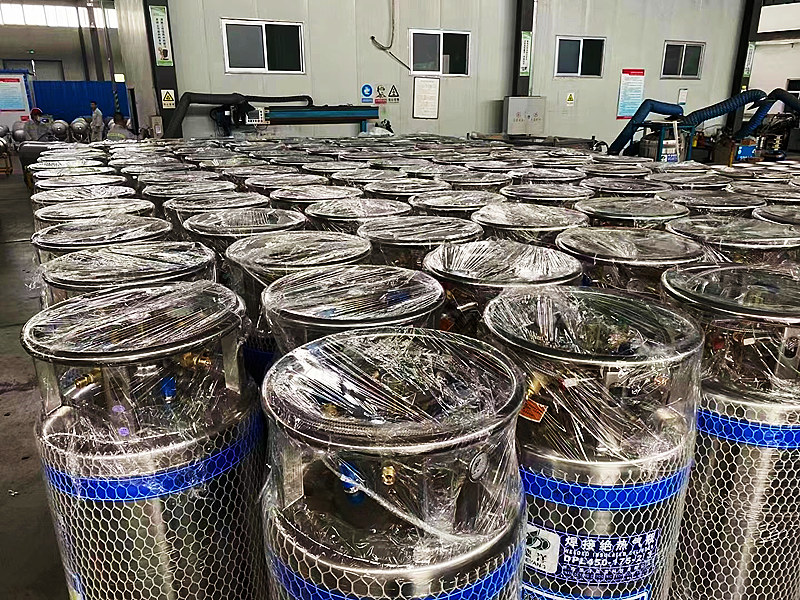The material of the inner tank of the cryogenic storage cylinders is austenitic stainless steel; the material of the outer container is Q235-B, Q245R or 345R according to the national regulations, and the interlayer of the inner and outer containers is filled with insulating material pearl sand or aluminum foil, thermal insulation cotton. and vacuum. Next, we will focus on analyzing the basic forms of cryogenic storage tanks.
There is no consistent standard for the design definition of cryogenic storage tanks. Compared with the UK, the technical specifications in this area are more systematic and comprehensive. Its standard “Flat Bottom Vertical Cylindrical Low Temperature Storage Tank Application” defines low temperature tanks as three types of tanks, including single-container tanks, double-container tanks and full-container tanks, according to different process requirements and medium storage methods. The single-container tank is generally composed of a steel inner tank and an insulating outer shell, while the double-container tank and the full-container tank are made of a steel inner tank and a steel or selected concrete (usually prestressed concrete). It is composed of an outer tank, and the insulation is set between the inner and outer tank walls.
When designing a low-temperature tank, due to the conduction effect of the low-temperature medium in the tank, the foundation soil is prone to freeze swell and cause the soil to bulge, thereby causing foundation damage. Therefore, in order to eliminate this disadvantage, in addition to the tank bottom and the foundation bottom In addition to the insulation method between the surfaces, it is also necessary to take anti-freezing measures for the base of the tank. There are two common methods. One is to use an electric or other heating system in the base plate, that is, to make a raft-type base with a circulating heating system. The other is to use the base plate to be overhead, and to separate the base plate from the foundation soil through the air layer formed by the overhead. The former is generally not used due to the high cost of the heating system. In most of the low-temperature tanks introduced and constructed in China, the overhead raft foundation method is generally used. The net height of the overhead layer is generally confirmed according to the process piping and equipment placement requirements, and it needs to be confirmed by a certain temperature conduction calculation based on the uneven temperature of the storage medium in the tank. Overhead raft foundation can be divided into single raft (cap) and double raft (cap) overhead. In the case of good geological conditions, the double raft foundation can generally be used; but because of low temperature storage. The requirements for the foundation settlement of the tank are relatively high. In most cases, especially on soft soil foundations with poor geological conditions, single raft (cap) piles are mostly used, and sometimes double rafts (caps) are used. ) pile foundation.
The above is the analysis of the basic form of cryogenic storage cylinders, I hope it will be helpful to everyone. If you still want to know more about cryogenic storage cylinders, please continue to pay attention to our website.
Post time: Mar-04-2022


